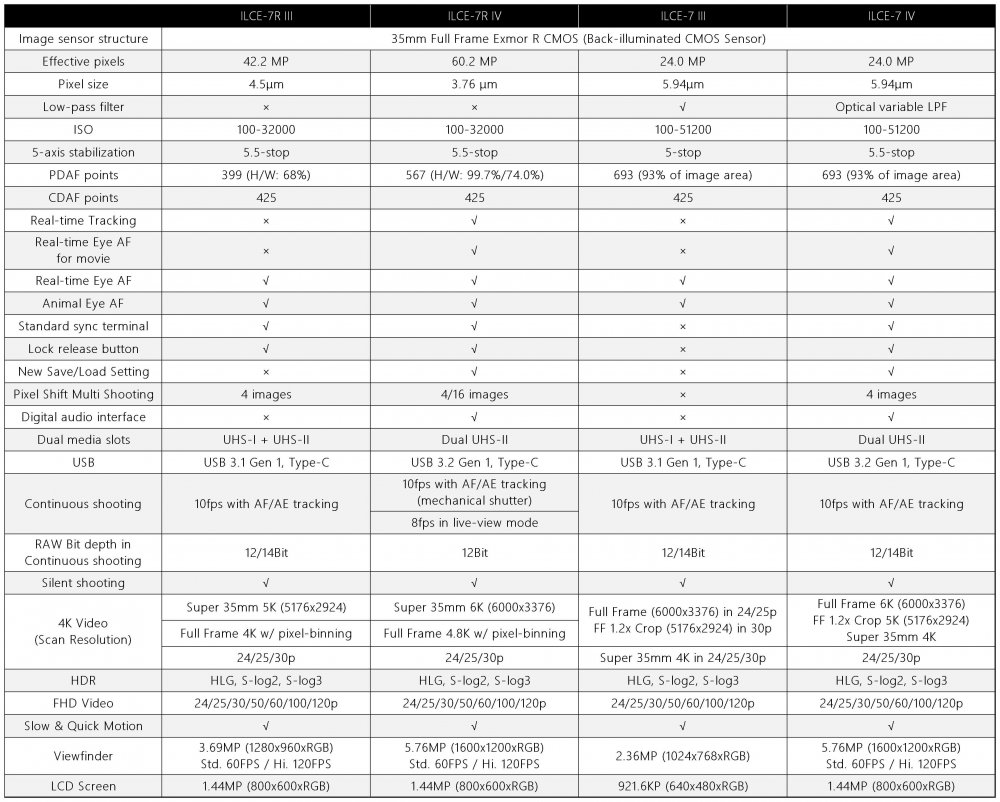
androidlad
Members-
Posts
1,215 -
Joined
-
Last visited
Content Type
Profiles
Forums
Articles
Everything posted by androidlad
-
Large Format Cameras Are Changing Film Language, From ‘Joker’ to ‘Midsommar’
androidlad replied to User's topic in Cameras
From a pure technical point of view, 50% of the 65mm mojo is the shift in relationship between FOV and perspective - a 50mm lens mounted on Alexa 65 has a wider 35mm FOV but maintains a 50mm perspective - often described as some kind of grandness or panoramic quality: capturing more without the wide angle look. The other 50% is of course the shallower DOF. -
What is the absolute cheapest high CRI light available?
androidlad replied to kye's topic in Cameras
CMOS sensors generally perform the best in daylight balanced source. There are quite a few high quality high CRI LED lights available, like this: https://store.yujiintl.com/collections/high-cri-led-lights/products/led-corn-bulb-for-photography-and-studio-lighting -
Colorizer Film Simulation LUTs for Fujifilm X-T3 F-Log
androidlad replied to Attila Bakos's topic in Cameras
Classic Neg please ? -
You're clearly using the wrong LUT. The latest official Canon Log LUT pack from Canon website is "canon-lut-201902.zip" and most of them are tagged version 1.1 or 1.2. And if you use "CanonLog-to-BT.709_BT.709", yes it'll clip like that, this one does not have any tone-mapping. Use the one with "BT.709_WideDR".
-
Based on my analysis, 4K DNG RAW is oversampled from full 6K readout, this is possible because this so-called "RAW" is already in-camera debayered RGB format.
-
Sigma fp vs Panasonic S1 eye AF comparison:
-
BS. In terms of colour spectrum, the LCD panel has no effect on the backlight, the panel is literally millions of tiny windows that open or close to modulate the backlight. CFL produces some IR and UV, yes it's broader but they are not in the visible spectrum, and the spikes are all over its SPD. Because our eyes can interpolate colours in between sharp RGB spikes and camera sensor can't, that's a big problem and it does matter.
-
"Camera sees RGB so it might be fine" - Nah it's not fine. HP, TVLogic and Sony all used RGB LED backlight for their high end products at some point. This is the backlight module with individual RGB LED modules, not RGB pixels in the panel! Old LCD typically have CCFL backlight, it's even more spikey and discontinuous than LED. Quantum dot produces even sharper RGB spikes so non of these are suitable as high quality lighting sources.
-
Nah. RGB LED backlight was once a very high-end technology reserved only for reference monitors, characterised by three distinct spike in its spectral power distribution. It doesn't have a good CRI due to its discontinuous spectrum, as it's intended to "trick" the human eye which is a tristimulus system (only respond to R, G, B and interpolate everything in between). High CRI/TLCI requires full spectrum light source and some high end white LED backlight can indeed provide.
-
Most cameras produce 8bit 4:2:2 jpeg files.
-
The sensor is FF yes, but they never said 4K is FF, and is unlikely. Source says internal RAW video is 6K 12bit up to 30P.
-
Classic Neg will be added to X-T3/X-T30/GFX100.
-
Guess you all forgot these two threads: HLG shifts 2/3 stop DR to the highlight compared to F-log due to the difference in ISO rating (1000 vs 640, it's NOT actual gain). Their underlying analog amplification are all ISO640.
-
There are a couple threads about your questions, easily searchable here.
-
Downsampled 4k looks way better than native 4k.. or not!
androidlad replied to ND64's topic in Cameras
A7S/A7S II record 4K with 1:1 readout, therefore there's a 1.1x crop. -
Downsampled 4k looks way better than native 4k.. or not!
androidlad replied to ND64's topic in Cameras
Modern BSI designs (Sony Semicon) virtually do not block any incident photons (100% fill factor), a 12MP FF sensor and 60MP FF sensor both receive the same amount of photons, it's just that the 60MP sensor has more readout noise. On-chip colour-aware binning is more efficient and higher quality than oversampling when deriving 4K/2K from higher resolution sensors. -
Again, don't use lights directly to fill shadow, it creates even more shadows! Just use any high quality daylight balanced LEDs (panels or spot lights) to bounce off ceiling and walls for a wrap around soft light.
-
I believe it's for a plastic surgery clinic - NEVER have any lighting fixture directly aimed at the subject, even with softbox - it creates hot spots and reveals all the blemishes. Use one or two spot light like Aputure C300D to bounce off the ceiling/wall for an even, relatively flat high key lighting. Avoid CFL lamp as they don't usually have good colour balance.
-
BREAKING NEWS: Fujinon XF 16-80mmF4 R OIS WR with lens firmware 1.01 offers smooth flicker-free zooming in the entire range, making it the most video-friendly lens in the Fujinon line-up.
-
It has to be PD compatible power source (9V) for continuous power without battery depletion. Regular USB power (5V) can only trickle charge.
-
https://www.lindy.ie/cables-adapters-c1/audio-video-c107/0-5m-cromo-slim-high-speed-hdmi-to-micro-hdmi-cable-with-ethernet-p7228
-
Panasonic P2 HD ENG cam and Fujinon servo zoom lens.
-
It can't start stop recording. Only Ronin SC with this trigger cable can: https://store.dji.com/product/ronin-sc-rss-control-cable-for-fujifilm
-
Do You Think They'll Ever Make a 12k Resolution Camera?
androidlad replied to Zach Goodwin2's topic in Cameras
In reality, IMAX 65mm/70mm film is not 12K (theoretically it's 18K). Taking into account image degradation during processing, printing, handling, storage and exhibition. The actual perceived resolution is around 6K to 8K. That's why most of the VFX shots in the Dark Knight IMAX sequence were rendered in 5.6K, after numerous tests and comparisons. Also GFX100 is technically a 12K camera (if you shoot time-lapse with it). For strictly motion picture camera running >24fps, 8K is the end.

